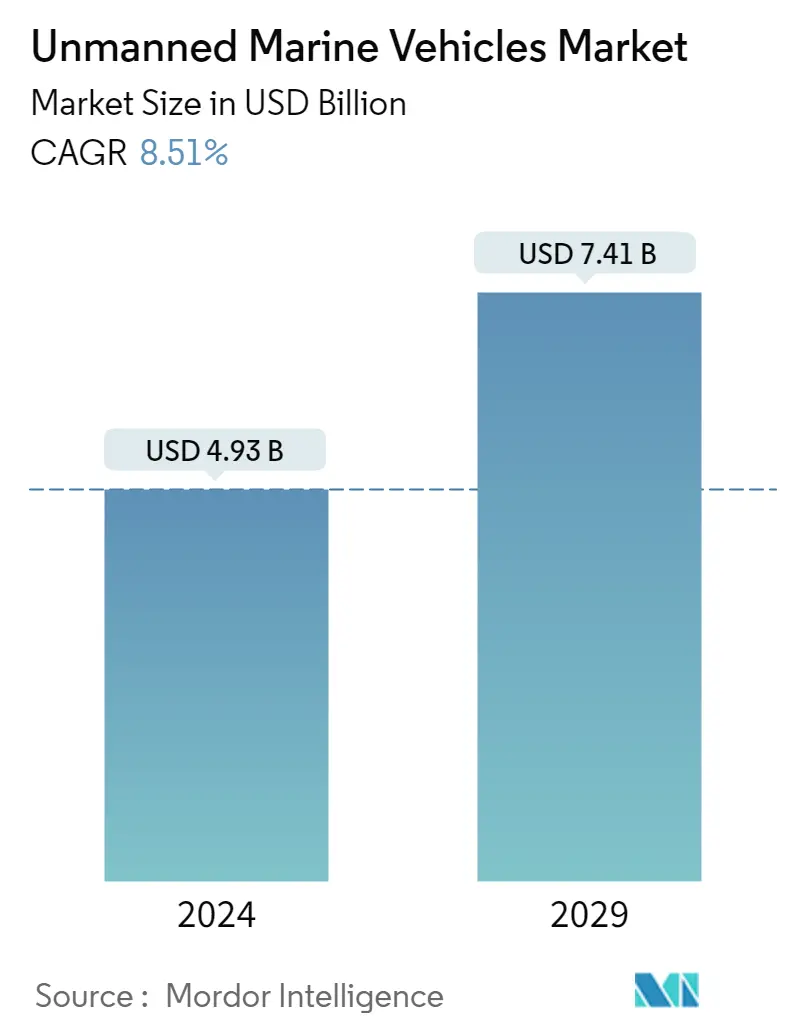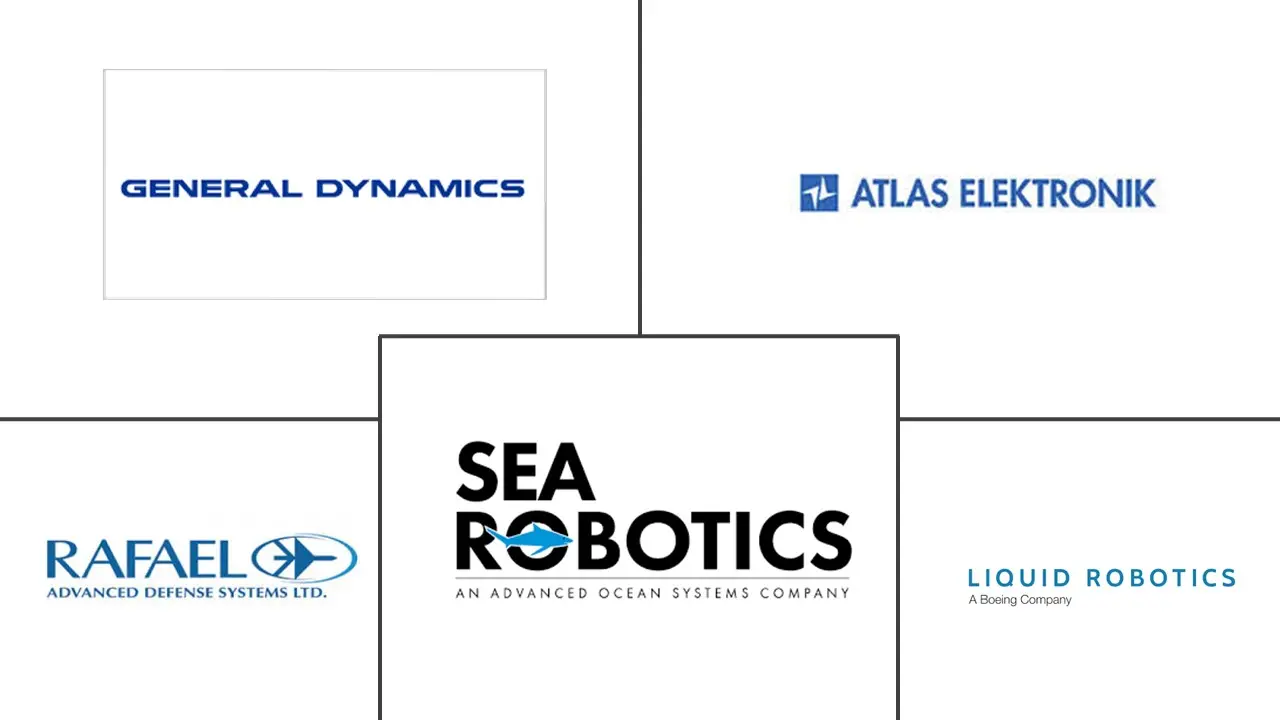Market Size of Unmanned Marine Vehicles Industry

| Study Period | 2019 - 2029 |
| Market Size (2024) | USD 4.93 Billion |
| Market Size (2029) | USD 7.41 Billion |
| CAGR (2024 - 2029) | 8.51 % |
| Fastest Growing Market | Asia-Pacific |
| Largest Market | North America |
Major Players
*Disclaimer: Major Players sorted in no particular order |
Need a report that reflects how COVID-19 has impacted this market and its growth?
Unmanned Marine Vehicles Market Analysis
The Unmanned Marine Vehicles Market size is estimated at USD 4.93 billion in 2024, and is expected to reach USD 7.41 billion by 2029, growing at a CAGR of 8.51% during the forecast period (2024-2029).
With rapid technological development, acoustic sensors for high underwater navigation are on trend. The aim is to reduce the cost and latency of current underwater navigation systems that typically employ high accuracy.
- Oceanic surveillance is driving the market for defense purposes as unmanned marine vehicles offer greater capacity for surveillance, identification, and interception than traditional systems. They can be equipped with stabilized weapons systems, surveillance systems, and electro-optical tracking systems capable of monitoring day and night using infrared vision.
- In addition to operational cost reductions and platform design, improvements in sensors would reduce costs by reducing science payload power requirements and enable the usage of progressively smaller platforms. Improved sensors, platforms' interoperability, and interfaces would significantly reduce costs.
- The ideal sensor for future autonomous platforms would be cost-effective, interoperable, compact, web-enabled, and self-identifying. Cost-effective sensors may be suitable for the large-scale production of unmanned marine vehicles and could utilize features of modern electronics, such as positioning, communication, and miniaturization. Various sensor types, such as vision sensors, Light Detection and Ranging (LiDAR), infrared, sonar, and radar, are used on USVs to navigate while avoiding obstacles safely.
- Increased usage of unmanned marine vehicles for underwater mapping, particularly for marine geoscience studies, is expected to drive the market's growth. More emphasis in the future will be directed toward documenting the various stable states of Earth's systems, discovering what events trigger evolution from one stable state to another, and identifying the linkages between the states of very different systems like climate and tectonics activity, which will drive the need for unmanned marine vehicles.
- However, the high cost of UMVs and the associated maintenance issues may hinder the market in the short term. This challenge is expected to minimize its impact on the market in the long run as companies develop more advanced systems and gain more expertise in providing maintenance services.
- The COVID-19 pandemic has negatively impacted the overall marine industry, and crewless marine vehicles are no exception. Various preventive measures that various governments took across the world to contain the spread of the virus severely disrupted the supply chains across industries and hampered the manufacturing operations of several companies globally.
